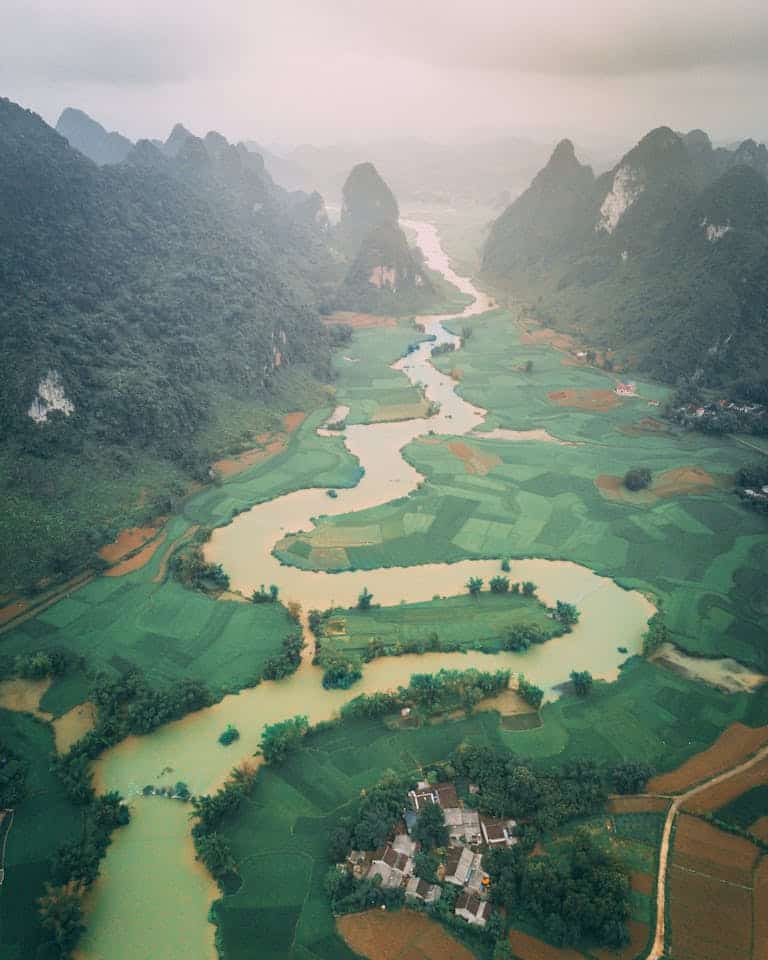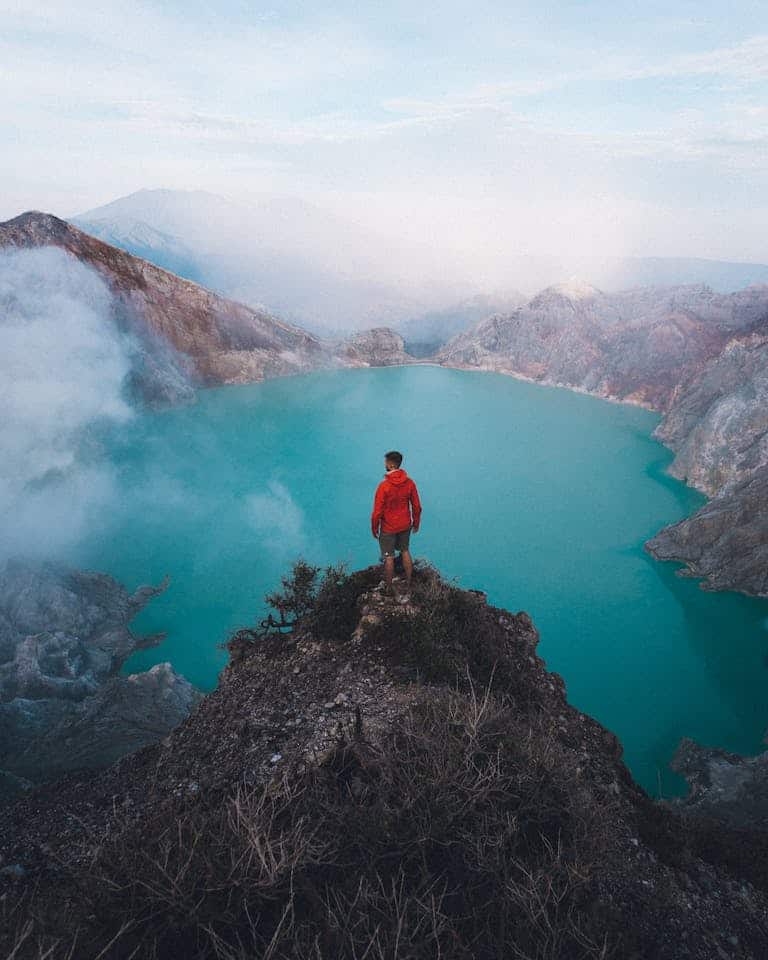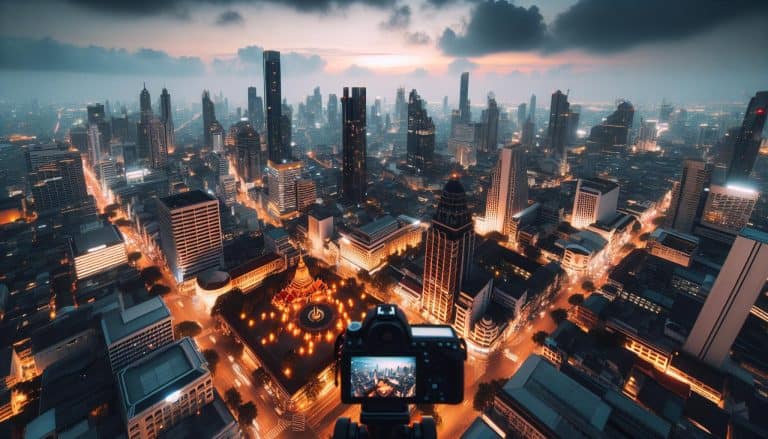Best Time to Visit Southeast Asia in 2025

Planning a trip to Southeast Asia and wondering about the best time to go?
You’re not alone!
Linen shirts and cute sundresses? Not the most practical attire when you’re spending half your time dodging torrential downpours! ☔️
But guess what?
We adapted quickly and still fell head over heels for Southeast Asia.
The vibrant culture, the friendly people, and the incredible food completely won us over. It taught us the importance of timing your trip right.
It inspired us to start researching and planning to invest in a Second Home Southeast Asia region.
The region’s tropical climate can be a bit tricky to navigate, with different countries experiencing different weather patterns.
But don’t worry—I’ve got you covered!
I am here to guide you to avoid my first timer mistakes!
Did you know that hotel prices can drop by up to 50% during the rainy season?
But before you book those cheap rates, let’s chat about finding that sweet spot between Perfect Weather and Crowd-Free travels!
Let’s dive in to and learn about the best time to travel to Southeast Asia, so you can make the most of your vacation.
Key Takeaways
- November to February is generally the best time (dry season + cool weather)
- Avoid April-May (unless you love extreme heat!)
- Shoulder seasons (March, October) offer good weather + fewer crowds
- Each country has slightly different optimal times
- Festivals can affect prices and availability
What are the best months to Travel Southeast Asia in 2025?
Planning a trip to Southeast Asia in 2025 and wondering about the best time to go?
It’s a great question, and one that’s worth considering carefully, as Southeast Asia’s weather can be quite diverse!
Think of it like trying to predict the weather across the entire United States – it varies significantly depending on where you are.
Southeast Asia is similar, with distinct microclimates and seasonal variations that can impact your travel experience.
Instead of a simple “best time to go,” it’s more helpful to think region by region.
For example, while one area might be experiencing its rainy season, another could be enjoying perfect sunshine.
This means your ideal travel dates will depend heavily on which countries you plan to visit.
Generally speaking, the “dry season” (often considered the best time to visit) across much of Southeast Asia runs from November to April.
During these months, you can typically expect less rain, lower humidity, and pleasant temperatures.
However, this is also peak tourist season, so expect higher prices and more crowds.
The “shoulder seasons” (May-June and September-October) can offer a sweet spot – a balance of good weather and fewer crowds, often with better deals on accommodation.
Just be prepared for the possibility of some rain.
The “rainy season” (July-August) shouldn’t necessarily be ruled out entirely.
While you can expect more frequent showers, they’re often short-lived, and you can still enjoy plenty of sunshine in between.
Plus, everything is lush and green, and you’ll encounter far fewer tourists.
The rainy season can also bring lower prices, making it a budget-friendly option.
So, before you book your flights, do a little research on the specific weather patterns for the countries you’ll be visiting.
Knowing what to expect will help you pack appropriately, plan your itinerary effectively, and ultimately have a fantastic trip.
Thailand’s Sweet Spots: Timing is Everything! 🇹🇭
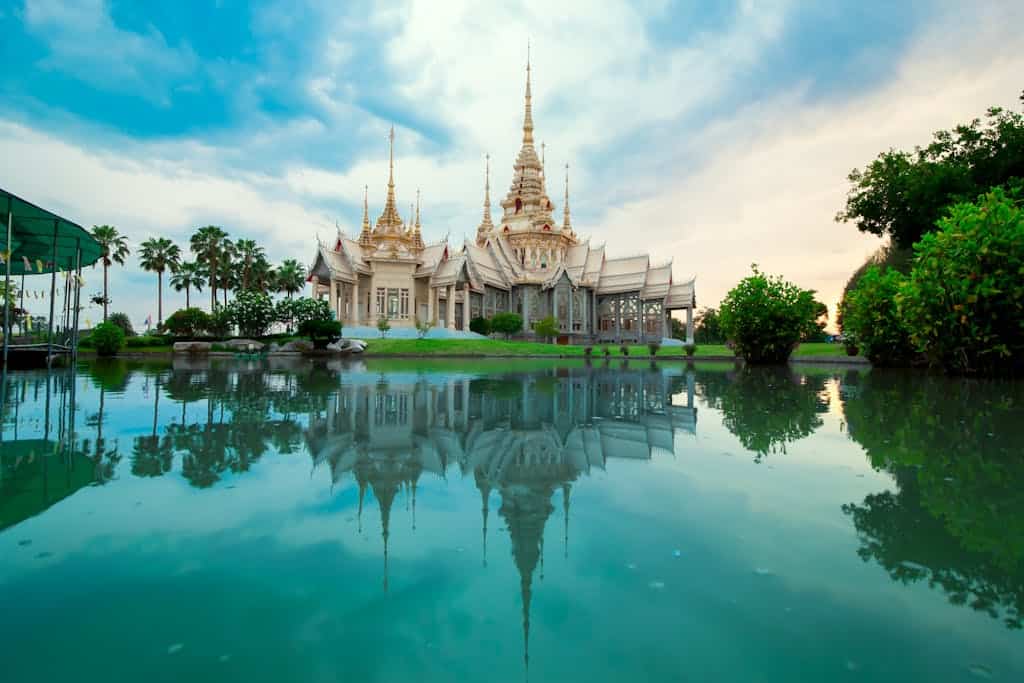
Imagine Thailand as a seesaw – when one end is perfect, the other might be… well, not so much.
November to early April is your sweet spot for most of the country.
But here’s the tea (Chai for me please) – Bangkok in April?
It’s like standing in a sauna wearing a winter coat. Been there, done that, got the sweat-soaked t-shirt!
The city hits temperatures that’ll have you hunting for air conditioning like it’s your job.
Best Time to Visit:
- November to February:
- This is the prime time to visit most of Thailand, especially for those who want to avoid the intense heat and rain.
- The weather is cooler (relatively speaking) and less humid, making it ideal for exploring cities, trekking in the north, and enjoying the beaches in the south.
- Temple runs in April are fun in the heat – make sure to stay hydrated.
Bangkok’s Heat (When to Avoid):
- March to May
- Bangkok can get really hot during these months. With temperatures often exceeding 35°C (95°F), it can feel like you’re walking through a sauna.
- If you don’t handle heat well, this might not be the best time for city exploration.
- Why You’d Still Go
- If you’re up for the heat, there are fewer tourists, which means you can enjoy all the cultural landmarks without the crowds, and it’s cheaper!
- But pack light, airy clothing, and hydrate often.
Island Escapes:
- Koh Samui, Phuket, Krabi
- These southern islands are best from December to March when they’re in the dry season.
- Koh Samui
- Sees the least rain, but places like Phuket or Krabi are popular year-round, though they’re busiest from December to February.
Vietnam’s Tricky North-South Weather Split 🇻🇳
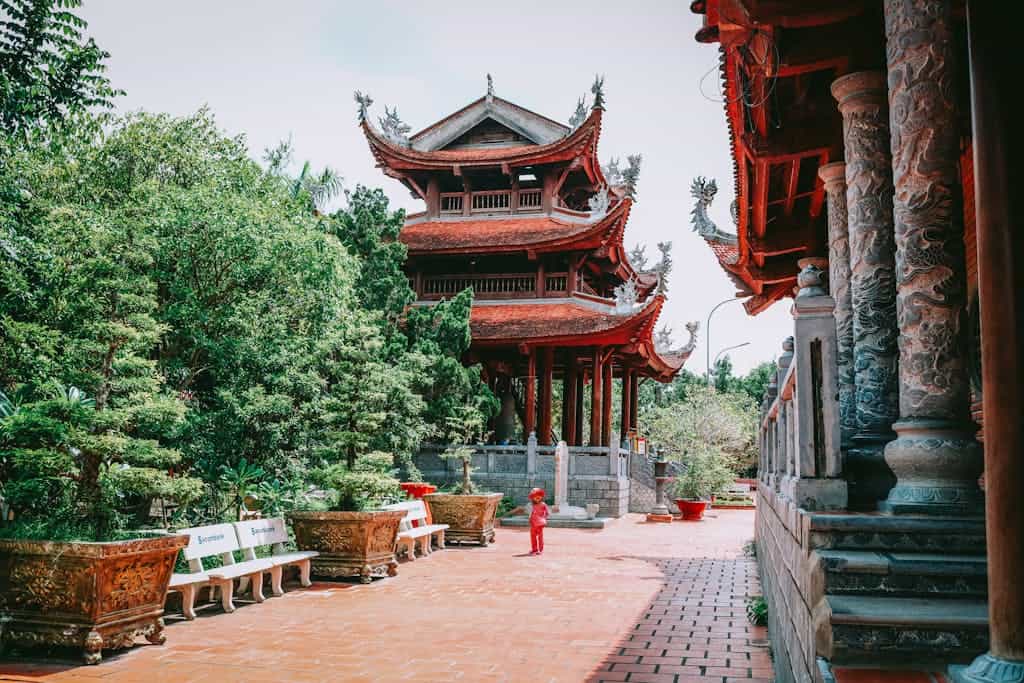
Here’s where it gets interesting – and by interesting, I mean totally mind-boggling!
Vietnam is like that friend who can’t make up their mind.
The north and south literally have opposite perfect seasons.
It’s like they’re playing weather ping-pong!
North Vietnam (Hanoi, Ha Long Bay, Sapa)
Best Time to Visit: October to April.
- The temperatures are cooler (around 18°C to 25°C or 64°F to 77°F).
- Perfect for exploring the cultural sites, trekking in Sapa, and cruising in Ha Long Bay.
- The weather can get chilly in the winter month.
- Especially from December to February, so pack layers if you’re going during that time.
- Unless you enjoy that misty, drizzly aesthetic (which I love).
South Vietnam (Ho Chi Minh City, Mekong Delta, Phu Quoc):
- Sweet spot: December to February
- Dry season with bearable humidity (trust me, this matters!)
- Skip May-September unless you’re part dolphin
Best Time to Visit: December to April.
- This is the dry season, with plenty of sunshine and warm weather (around 25°C to 35°C or 77°F to 95°F).
- It’s ideal for beach lovers, city explorers, and anyone interested in cruising the Mekong River.
Avoid: June to October for the rainy season, especially in places like Ho Chi Minh City, where heavy afternoon downpours are common.
It’s not that bad, but expect occasional flooding.
Central Vietnam (Hue, Da Nang, Hoi An)
Best Time to Visit: February to May.
- This is when Central Vietnam is at its best—mild temperatures and little rain.
- During the monsoon season (from September to November), expect more rain and occasional typhoons, which can disrupt travel plans.
Indonesia’s Island-by-Island Best Times 🇮🇩
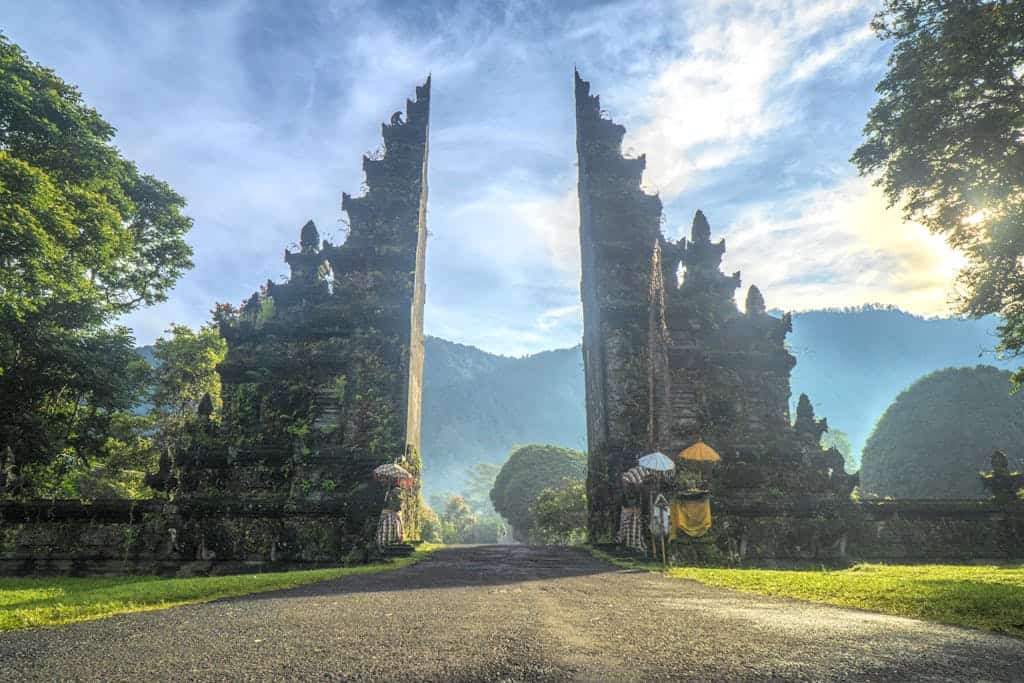
Oh man, Indonesia’s weather patterns are like trying to coordinate a group chat – everybody’s on their own schedule!
Bali’s not the same as Java, which isn’t the same as Sumatra.
Bali
- Golden time: April to October
- But July-August? Tourist central! Think Times Square on New Year’s Eve.
- My secret? Early September. Still perfect weather, half the crowds
Best Time to Visit: April to October.
- This is Bali’s dry season, with plenty of sun, clear skies, and warm temperatures around 28°C to 30°C (82°F to 86°F).
- The island is perfect for beach lovers, surfers, and culture seekers during these months.
If you’re planning to trek Mount Rinjani or explore Ubud’s rice terraces, this is the time for it!
Java (Jakarta, Yogyakarta, Bromo)
- Dry season: May to September
- Pro tip: Visit Borobudur in June for those killer sunrise shots
Best Time to Visit: May to October.
- These months are ideal for exploring Java, with less rain and cooler temperatures.
- The volcanoes, temples, and cities are much more accessible and pleasant to explore.
Sumatra
Best Time to Visit: May to September.
- Sumatra’s wet season can be unpredictable.
- The dry months give you better chances of exploring the rainforests, hiking to see orangutans, and relaxing in places like Lake Toba.
Lombok & Komodo Islands:
Best Time to Visit: April to October.
- Much like Bali, the dry season is the best time for trekking, diving, and beach activities on these islands.
Malaysia’s East Coast vs. West Coast Seasons 🇲🇾

My favorite! This one’s like playing weather chess.
The east and west coasts are literally playing opposite games.
Malaysia is split into two sides
- The west coast (with cities like Kuala Lumpur, Penang, and Langkawi)
- The east coast (with beautiful islands like Perhentian Islands and Tioman Island).
The weather varies quite a bit between them.
West Coast (Kuala Lumpur, Penang, Langkawi)
Best Time to Visit: November to February.
- This is the dry season, perfect for enjoying the beaches of Langkawi, exploring Penang’s culture, and visiting the capital, Kuala Lumpur, without the rain.
- Prime time: December to February
- Shoulder season hack: Early March or late November
East Coast (Perhentian Islands, Tioman, Redang):
Best Time to Visit: March to October.
- This is the dry season on the east coast, when you’ll find the best weather for diving, snorkeling, and enjoying the stunning beaches.
- From November to February, the east coast experiences heavy monsoons, so many hotels and services shut down.
- March to September is your window
- October to February? Most resorts literally shut down
Overall: If you’re focusing on the west coast, you can visit almost anytime between November and March, but for the east coast, stick to the dry season from March to October.
Philippines’ Typhoon Season Tips 🇵🇭
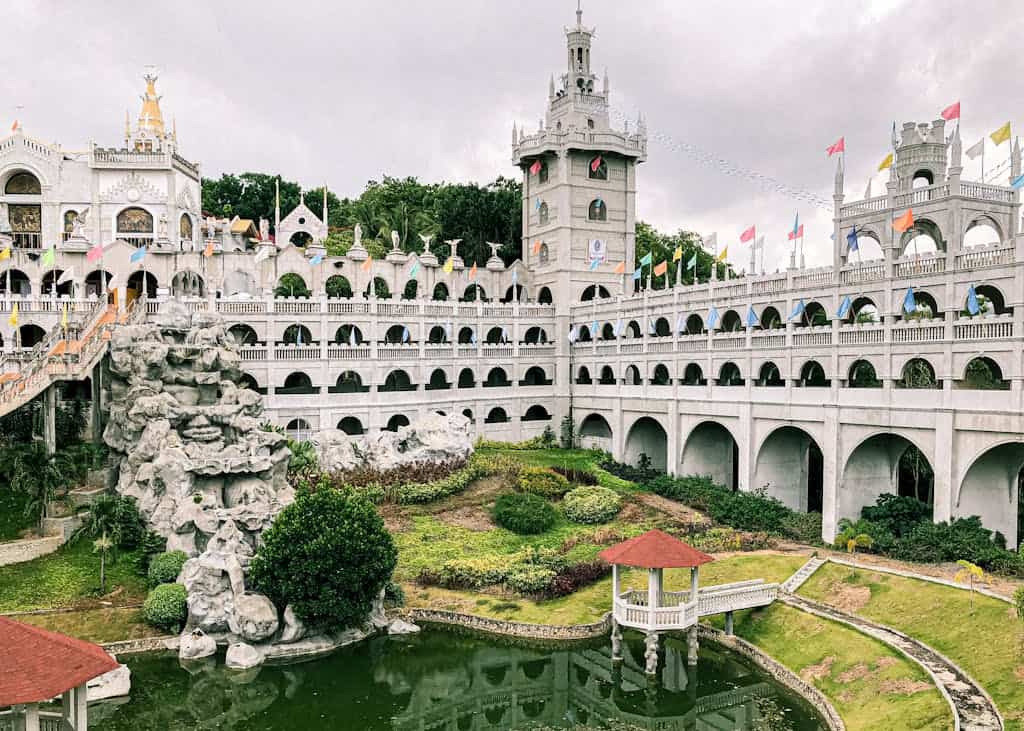
Let me tell you, planning Philippines weather is like playing weather roulette – except I’ve got the cheat codes now!
Best Time to Visit
December to May.
- These months offer the best weather, with dry conditions, clear skies, and mild temperatures around 26°C to 32°C (79°F to 89°F).
- It’s perfect for island hopping, beach trips (think Palawan, Boracay, Cebu), and exploring the country’s natural wonders.
The Golden Rule: December to February is your safest bet.
But here’s my insider secret – October/November can be amazing too.
Yes, it’s technically still typhoon season, but prices are lower, and you often get gorgeous weather.
Just keep your plans flexible and have backup options ready.
The key is to find the sweet spot when the weather’s pleasant, and it’s not too crowded with tourists.
7 Best Time to Travel Southeast Asia: A Month-by-Month Breakdown 📅
1. November – The Sweet Spot 🌟
Here is a Month-by-Month Breakdown (The Real Deal!) 📅
Imagine walking into a party right when the vibe is perfect – that’s November in Southeast Asia!
The monsoons are packing their bags, temperatures are like a perfect hug (not too hot, not too cold), and the tourists haven’t invaded yet.
It’s like having the best of both worlds – great weather without the holiday season chaos.
Insider Tip: Good time to Book those Halong Bay cruises now.
The water’s calm, skies are clear, and prices haven’t hit their Christmas spike!
2. December – Festival Fever 🎄
Okay, real talk – December is like Black Friday shopping in Southeast Asia. Everyone wants in!
Yes, the weather’s amazing (think perfect beach days), but your wallet might need therapy.
Christmas and New Year’s jack up prices faster than my mom can say “Did you pack sunscreen?”
Insider hack: Book at least 3 months ahead for December.
3. January – Peak Paradise ☀️
The weather’s showing off like it’s on Instagram, but so is everyone else! It’s high season with capital H-I-G-H.
Think perfect beach weather, zero rain, and tourists… everywhere. Like trying to find peace at a Justin Bieber concert!
Money-saving trick: Look for accommodations slightly off the main tourist drags.
A 10-minute walk can save you 50% on hotel rates!
4. February – Love is in the Air ❤️
Lunar New Year alert! If you thought Christmas was busy, hold onto your noodle soup!
Prices skyrocket faster than a SpaceX launch, especially in Vietnam and Singapore.
But the festivities?
Totally worth it if you plan right!
5. March – The Transition Dance 🌤️
March is like that friend who can’t decide what to wear. Some days are perfect, others start getting spicy hot.
It’s shoulder season (the period of time between a region’s peak season and offseason) though, which means deals are poppin’ up like mushrooms after rain!
6. April to June – Can still be a good time to visit,
It’s a bit of a transition period.
Here’s what to keep in mind:
BONUS: April is Songkran Season – The Big Splash 💦
Imagine if everyone collectively decided to turn the world into a giant water park – that’s Songkran!
Thailand’s New Year is EPIC, but book way ahead or you’ll be sleeping on a beach (been there, got the sunburn).
7. July to October: Monsoon Season
The monsoon season in Southeast Asia generally runs from July to October, with heavy rainfall, high humidity, and occasional tropical storms.
While this is not the best time to visit for most outdoor activities, there are a few reasons you might still want to travel during these months:
- Rainy Days:
- Expect afternoon downpours that can last for hours.
- These rains are typically heavy but short, and many tourists still manage to enjoy their time, especially if they’re focused on indoor activities like cultural experiences, markets, or cooking classes.
- Lower Crowds and Prices:
- The rainy season means fewer tourists, which can be great if you’re looking for a quieter experience and cheaper prices.
- Hotels and flights tend to be more affordable.
- Good for Certain Areas:
- While most of Southeast Asia sees rain, the southern parts of countries like Vietnam or Thailand (like Ho Chi Minh City or Krabi) are still quite popular during the monsoon months, especially if you don’t mind the occasional downpour.
A Quick Guide for Monsoon Season Travel in Southeast Asia 💦

Don’t let the rain scare you off!
Traveling Southeast Asia during the Monsoon season can be an incredible experience!
Imagine exploring ancient temples shrouded in mist, enjoying deserted beaches, and indulging in delicious local cuisine at cozy cafes while everyone else avoids the rain.
You’ll encounter fewer tourists, enjoy lower prices on flights and accommodation, and witness the breathtaking beauty of the region transformed by the rain.
Thinking of traveling to Southeast Asia during the rainy season?
Here’s what you need to know
5 General Tips to Enjoy Southeast Asia Monsoon Season
- Embrace the Rain:
- Southeast Asia is lush and green for a reason!
- The rain can actually be refreshing, and you might find fewer crowds and lower prices during the monsoon season.
- Pack Accordingly:
- Bring a lightweight, waterproof jacket or poncho.
- Don’t forget quick-drying clothes, and consider a small umbrella.
- Check Local Forecasts:
- Monsoon patterns can vary greatly, even within a small region.
- Check the weather forecast regularly before and during your trip.
- Consider Inland Adventures:
- If heavy rain is predicted at the coast, explore inland areas like mountains, rice paddies, or charming towns.
- Bargaining Power:
- With fewer tourists, you might have better luck bargaining at markets and with local vendors.
Navigating Southeast Asia Monsoon Season Travel By Countries 🌎
Now, let’s add some more destinations to the list:
Cambodia (Siem Reap, Angkor Wat) 🇰🇭
- The monsoon season in Cambodia can bring heavy rain, but it’s also a great time to see the lush green surroundings of Angkor Wat.
- Be prepared for potential flooding in the city, but the temples are usually still accessible.
Laos (Luang Prabang, Vang Vieng) 🇱🇦
- The north of Laos can be quite wet, but the scenery is stunning, and the waterfalls are at their best.
- The south is generally drier, but the heat and humidity can still be intense.
Malaysia (Kuala Lumpur, Penang) 🇲🇾 ❤️
- The west coast of Malaysia can experience heavy rain, but the east coast is generally drier.
- The islands of Langkawi and Tioman are great for beach lovers, but be prepared for potential rain showers.
Indonesia (Bali, Lombok) 🇮🇩
- The monsoon season in Indonesia can bring strong winds and heavy rain, but the scenery is still breathtaking.
- The Gili Islands are a great spot for snorkeling and diving, but be prepared for potential rough seas.
Singapore 🇸🇬
- This tiny island city-state is generally dry and hot, but it’s a great place to escape the rain.
- Be prepared for intense heat and humidity, but the air-conditioned malls and restaurants are a welcome respite.
Philippines (Boracay, Cebu) 🇵🇭
- The Philippines can experience typhoons during the monsoon season, so it’s essential to stay informed and follow local advice.
- The beaches are still beautiful, but be prepared for potential rough seas and strong winds.
Vietnam (Hanoi, Ha Long Bay) 🇻🇳
- The winter monsoon hits northern Vietnam (Hanoi, Ha Long Bay) from October to April
- Consider visiting Dalat or Nha Trang if you want to escape some of the heaviest rains
Thailand 🇹🇭
- The islands have a silver lining during monsoon – you’ll get these dramatic skies that make for amazing photos
- Koh Samui, Koh Phangan, and Koh Tao follow a slightly different pattern than Phuket and Krabi
- Most rain showers are intense but short, leaving plenty of sunny gaps to explore
I hope this expanded guide helps you plan your monsoon trip to Southeast Asia!
Important Note: This is just a general guide. Always research specific destinations and consult travel advisories before making your travel plans.
Maximizing Your Travel Experiences in Southeast Asia 🧳
Listen, timing your Southeast Asia trip is like cooking the perfect bowl of pad thai – it’s all about balance!
Whether you’re chasing festivals, hunting bargains, or just trying to avoid melting in the heat.
There’s a perfect month for your style.
In Southeast Asia, “Shoulder Season” refers to the period of time just before and after the peak tourist season.
Typically falling around March-April and October-November depending on the specific country.
5 Keys to Shoulder Seasons and Strategic Timing
1. Shoulder Season Secrets 🤫
2. Bargain Hunter’s Calendar
3. Festival FOMO Prevention Guide
4. Benefits of Strategic Timing:
5.Potential Challenges:
Even in “off” seasons, Southeast Asia serves up magic.
Some of my favorite travel stories came from those “less than perfect” times.
Now get out there and start planning! 🌏
To summarize, the best months to visit Southeast Asia are between November and March. ✈️
This is when the weather is typically the most pleasant, with cooler temperatures and less rain.
Here’s a breakdown of what to expect in these months:
- Dry Season:
- Most of the region experiences its dry season during this time, making it perfect for beach lovers, nature hikes, and exploring cities.
- Moderate Temperatures:
- The heat is still there, but it’s not as intense as during the peak summer months.
- You can expect temperatures between 25°C and 32°C (77°F to 89°F)—comfortable enough for outdoor activities without melting.
- Less Rain:
- The monsoon season is mostly over, so you’ll have clear skies for sightseeing and outdoor adventures.
- It’s an ideal time for exploring islands, trekking in the jungle, or visiting cultural sites.
Why You Need To Consider Your Destination’s Microclimates In Southeast Asia🌦️?
Let me tell you why understanding microclimates in Southeast Asia is super important – (this is good to know).
It’s kind of like playing weather detective, and trust me, it can make or break your trip! 🕵️♂️
You know how your house has that one room that’s always weirdly cold or hot?
Southeast Asia is like that, but on a much bigger scale.
Avoid 3 Common Travel mistakes
Mountain Magic ⛰️
Here’s something cool – for every 1,000 meters you climb up, the temperature drops significantly.
So while you might be sweating buckets in Bangkok, places like the Cameron Highlands in Malaysia ❤️ can get downright chilly!
Pack layers, folks – your tank top and flip-flops won’t cut it everywhere.
Coastal Quirks 🌊
The coast isn’t just about beaches and sunsets.
Coastal areas in Southeast Asia can experience completely different weather patterns than spots just a few miles inland.
Take Vietnam, for instance – Ha Long Bay might be experiencing perfect sunny weather while Hanoi (just 165 km away) is dealing with drizzles.
Urban Heat Islands 🏙️
Big cities like Singapore and Jakarta create their own mini-climates.
All that concrete and human activity can make these urban areas feel 3-5°C warmer (roughly 5.4 – 9°F for us Americans) than their surrounding regions.
Insider Tip: Planning outdoor activities? Early morning or evening might be your best bet in these concrete jungles.
Practical Tips for Navigating Southeast Asia’s Microclimates
- Stay informed
- Keep an eye on local weather forecasts and sign up for weather alerts to stay up-to-date on any changes in the weather.
- Research, research, research
- Before you arrive at your destination, research the local weather patterns and microclimates.
- This will give you a better understanding of what to expect and help you prepare accordingly.
- Pack smart
- Don’t just pack for the tropics – consider the specific microclimate of your destination.
- Bring layers for cooler climates, and don’t forget to pack a waterproof jacket or umbrella for rainy days.
The Money Talk: High Season vs. Low Season 💰
Price Differences: The Real Story 📊
Picture this: imagine buying the exact same ice cream cone, but in July it’s $2, and in December it’s $6.
That’s basically Southeast Asia’s pricing strategy!
Here’s a bit more detail on those price swings:
High Season (November-February):
- Hotel prices jump 50-200% (not a typo, friend!)
- A basic beach bungalow in Thailand might go from $30 to $90
- Even street food vendors sometimes bump their prices
- Tours often add “peak season surcharges”
Why the surge? The weather is generally fantastic, and it’s peak holiday time for many travelers.
Expect to pay a premium for: Flights, accommodation, popular tours, and even some restaurants.
Pro Tip: If you must travel during high season, book in advance, especially flights and accommodation.
A Few More Things to Consider
- Weather: While low season often means rain, it also means fewer crowds and lush greenery.
- Flexibility: If you’re flexible with your travel dates, you can often find better deals.
- Research: Do your research beforehand to understand the typical weather patterns and pricing trends for your chosen destinations.
By understanding the “Money Talk” of high and low seasons, you can make informed decisions about when to travel and how to maximize your budget.
When to Start Booking? – Smart Booking Timeline Tips ⏰
Think of this like preparing for a big game – timing is everything!
High Season Bookings:
- Flights: 3-4 months ahead
- Popular hotels: 2-3 months minimum
- Tours: 1 month ahead
- Festival times: 6 months isn’t too early!
Low Season Bookings:
- Last-minute deals are your friend
- Book first night, negotiate in person for longer stays
- Keep flexible for weather changes
Benefits of Strategic Booking:
- Save up to 70% on accommodations
- More room choices available
- Better negotiating power
- Flexible cancellation policies
Potential Drawbacks:
- Weather can be unpredictable
- Some attractions have limited hours
- Fewer scheduled tours
Look, managing money in Southeast Asia is like being a weather forecaster.
It’s all about patterns and timing!
Whether you’re balling on a budget or living your best luxury life, knowing these patterns can save you literally hundreds of dollars.
Just remember my golden rule – never book anything festival-related at the last minute unless you want your credit card to cry! 💳✨
Southeast Asia is home to some incredible festivals, and timing your visit around one can make your trip even more special.
Here are a few major events to consider:
- Songkran (April)
- The Thai New Year, celebrated with massive water fights in the streets.
- Lunar New Year (January/February)
- Celebrated across many Southeast Asian countries, but especially in Vietnam, China, and Singapore. Expect colorful parades and fireworks.
- Diwali (October/November)
- Celebrated in places like Singapore and Malaysia, Diwali brings beautiful lights and festivals.
- Mooncake Festival (September)
- A big event in Singapore and Malaysia, where you’ll see lanterns and enjoy delicious mooncakes!
- Two major Islamic holidays celebrated twice a year in Southeast Asia
- Eid al-Fitr, marking the end of Ramadan, and Eid al-Adha, commemorating Abraham’s willingness to sacrifice his son.
5 Tips for Activity Based Timing to Visit South Asia
When planning a trip to Southeast Asia, timing is crucial to get the best experience, especially when your activities vary from trekking to beach time.
Here’s a breakdown of activity-based timing tips for making the most of your trip:
1. Best Months for Beach Time 🏖
- Ideal Season: December to April
These months fall within the dry season in most of Southeast Asia, making them the best time for beach activities. Expect sunny, warm days and minimal rainfall. - Top Destinations: Thailand (Phuket, Krabi, Koh Samui), Indonesia (Bali, Gili Islands), Vietnam (Phu Quoc), Malaysia (Langkawi, Perhentian Islands)
- Avoid: May to October—this is the rainy season, especially in the western coasts of Thailand and the Andaman Sea (such as Krabi), which sees heavy rain and rough seas.
2. Ideal Trekking Conditions 🥾
- Ideal Season: November to March
- This is the dry season, offering cooler temperatures and less rain, which are perfect for hiking in regions. Like the northern hills of Thailand, Vietnam’s Sapa, and the mountains of Myanmar.
- Top Trekking Destinations:
- Vietnam: Sapa, Ha Giang
- Thailand: Chiang Mai, Chiang Rai
- Avoid: The monsoon season (May to October) as trails can be muddy, slippery, and less accessible.
3. Diving Visibility Calendar 🤿
- Best Diving Months:
- Andaman Sea (Thailand, Myanmar, and Andaman Islands): November to April—calmer seas and better visibility, with water temperatures averaging 26–30°C.
- Bali and Komodo (Indonesia): April to November for clear waters and rich marine life. Komodo’s diving is especially famous between April and September, during the dry season.
- Philippines (Palawan, Cebu, Bohol): December to June—the dry season offers the best visibility and calm seas for diving.
- Worst Visibility: The rainy season (June to October) often causes poor visibility, especially in regions affected by monsoons.
4. Temple-Hopping Weather Guide 🏯
- Ideal Season: November to February
- The cooler, dry months are perfect for visiting cultural sites and temples across Southeast Asia.
- Major temple destinations like Angkor Wat (Cambodia), Bagan (Myanmar), and Luang Prabang (Laos) are all more comfortable to explore without the extreme heat or heavy rain.
- Top Destinations:
- Angkor Wat (Cambodia)
- Bagan (Myanmar)
- Luang Prabang (Laos)
- Ayutthaya (Thailand)
- Avoid: April and May, as these months can be scorching hot, especially in central Thailand and Cambodia.
5. Island-Hopping Seasonal Tips 🌴
- Ideal Season: December to March
Southeast Asia is home to numerous tropical islands. The dry season (December to March) is perfect for hopping between islands, especially when the weather is consistent, and ferry schedules are reliable.- Philippines: Palawan, Cebu, Siargao (best during dry season from December to May).
- Thailand: The best islands to visit during this period include Koh Samui, Koh Phangan, and Koh Tao on the Gulf of Thailand.
- Indonesia: Bali, Gili Islands, and Lombok are great choices.
- Avoid: Monsoon season (June–October)
- While some areas like Koh Samui or Bali’s eastern coast have good weather, many islands are more susceptible to storms and cancellations.
By syncing your activities with the right seasons, you can make sure your Southeast Asia trip is memorable for the right reason.
Whether it’s enjoying pristine beaches, perfect trekking conditions, or exceptional diving experiences.
Pros and Cons of Dry Season (November-February)
Dry Season (November-February) Pros
Dry Season (November-February)Cons:
Pros and Cons Wet Season (May to October) Cons:
Wet Season (May to October) Pros
Wet Season (May to October) Cons
Important Note: The impact of the wet season varies significantly across Southeast Asia. Research specific destinations and their typical weather patterns during this period before making your travel plans
To sum it all up, the best time to travel to Southeast Asia
- Best Months: November to March—dry, cooler weather, less rain, and great for outdoor activities, beaches, and sightseeing.
- Good Shoulder Months: April to June—still nice, but a bit hotter and with fewer tourists.
- Monsoon Season: July to October—rainy, but cheaper, quieter, and still manageable if you’re okay with occasional downpours.
Final Thoughts
There you have it, friends!
Ultimately, the perfect time to visit Southeast Asia really depends on your priorities.
Whether you’re chasing perfect beach days, trying to stretch your budget, or wanting to experience amazing festivals.
If you’re after the best weather and the most activities, aim for the dry season.
But if you’re looking to save money and avoid the crowds, traveling during the monsoon or shoulder seasons can also be a good choice
Remember, even in “bad” weather months, Southeast Asia is magical (and hey, those afternoon rains are a perfect excuse for a massage or cooking class!).
My 2 personal sweet spots?
- October – you get pretty good weather, better prices, AND fewer tourists sharing your Instagram shots! But that goes the same when I am in the States and or traveling other regions on the world.
- I wholeheartedly enjoy Monsoon Season! Plus, I can’t stand crowds!
Whatever month you choose, embrace the adventure – some of my best travel stories came from unexpected weather surprises!
Ready to start planning? ✈️ 🌺
Frequently Asked Questions (FAQs)
When’s the absolute BEST time to visit Southeast Asia?
November to February offers the most reliable weather, but expect higher prices and crowds. March and October are great compromise months!
What’s the best month for budget travelers?
March or October – you get decent weather, lower prices, and fewer crowds. It’s like hitting the Southeast Asia jackpot!
What about traveling during festivals?
Festivals are amazing but just book WAY ahead – places fill up fast, and prices skyrocket. Songkran (April) and Lunar New Year can double accommodation costs. The cultural experience is unmatched.
Should I completely avoid the rainy (monsoon) season?
Not necessarily! Rain usually comes in short bursts, and you’ll find great deals and fewer tourists. Just pack a rain jacket and be flexible.
What are “shoulder” seasons in Southeast Asia and are they worth it?
Absolutely! March and October often have good weather, lower prices, and fewer tourists – it’s my favorite time to travel!
How much can I really save in low season visiting Southeast Asia?
Typically 40-70% on accommodation, plus better deals on tours and activities. You can possibly get a $150/night resort room for $45!
Are budget season hotel deals actually good quality in Southeat Asia?
Absolutely! Same hotels, same rooms – just fewer people and better prices. Just check recent reviews to be sure!
Is it worth visiting during major Southeast Asian festivals despite higher prices?
Yes, but budget 2-3 times more for accommodation. The experience is priceless, but your wallet needs to be ready!
What if I can only travel during summer months (June-August)?
Focus on Indonesia (especially Bali), East Coast Malaysia, and parts of the Philippines. Skip Bangkok unless you’re a heat warrior!
Can I island hop year-round in Southeast Asia?
You can, but you’ll need to be strategic. Different island groups have different prime seasons – it’s all about following the good weather!
What’s the best translation app for traveling?
Google Translate is a solid choice, especially with its camera translation feature. For offline use, download the language packs ahead of time. Papago is also great for Southeast Asian languages.

